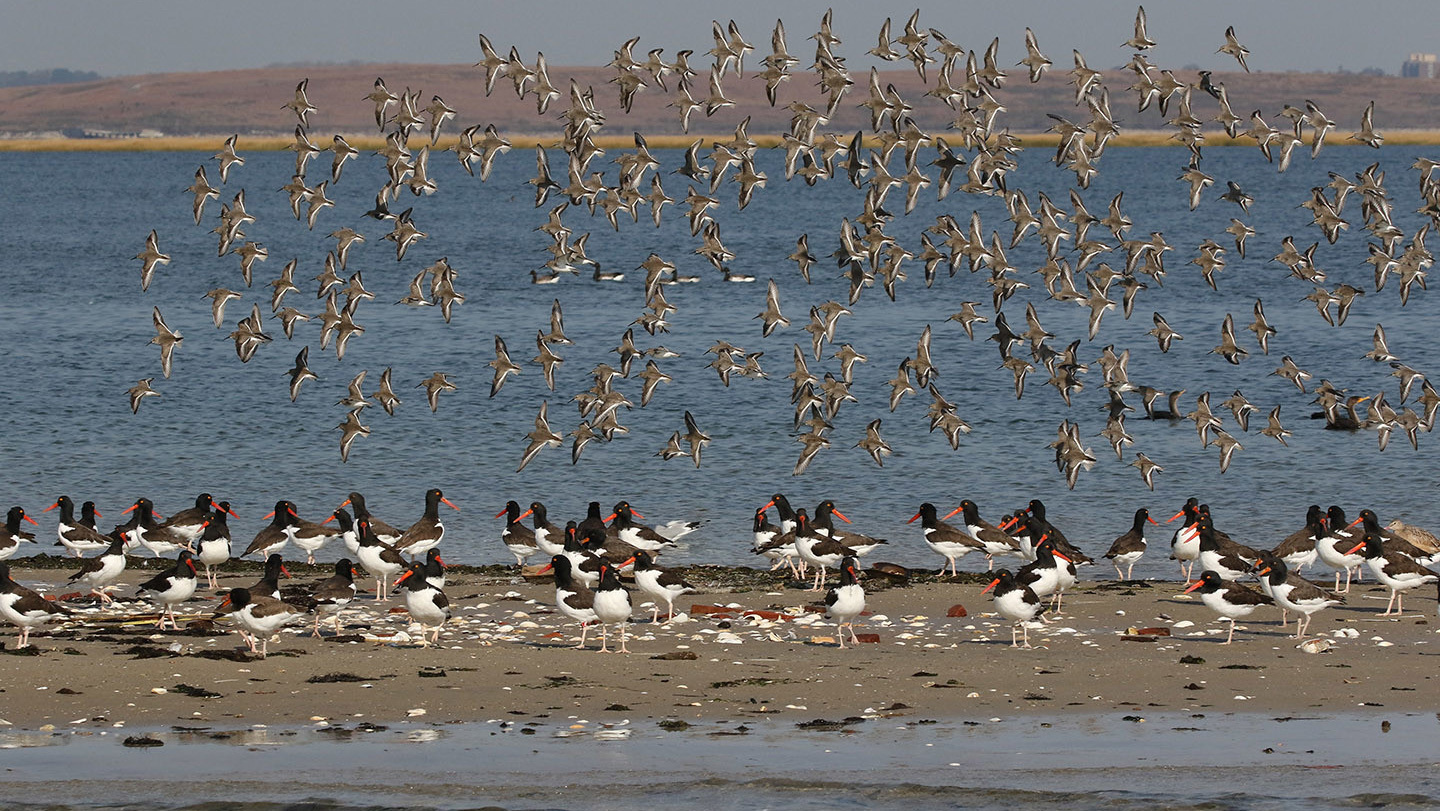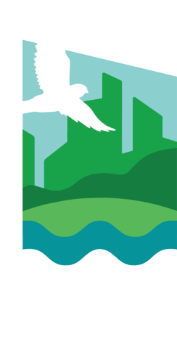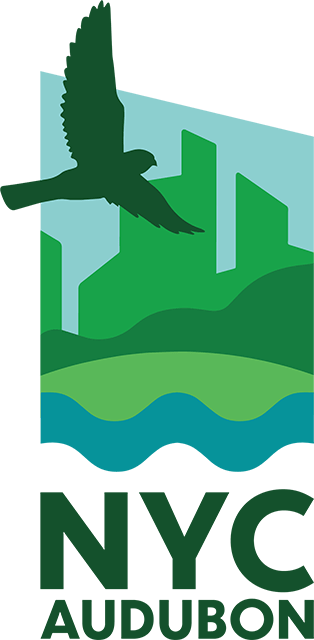Protecting Jamaica Bay
Great and Snowy Egrets, Double-crested Cormorants, and a Great Blue Heron gather in Jamaica Bay. Photo: Don Riepe
Jamaica Bay is New York City's largest wetland, and part of one of the country’s largest urban wildlife refuges, Gateway National Recreation Area. Sheltered from the Atlantic Ocean by the Rockaway Peninsula, this estuarine mosaic of open water, islands, tidal wetlands, beaches, ponds, upland fields, and woods provides habitat for more than 325 species of birds, including:
- breeding colonies of long-legged waders
- nesting grassland birds
- migratory shorebirds
- the largest concentration of beach-nesting birds in the Northeast
- Wintering Atlantic Brant, Snow Geese, Bufflehead, and other waterfowl
Other wildlife of the Bay includes 35 species of butterflies, 100 species of fish, and many rare and endangered plants.
Buffer the Bay: A History of Jamaica Bay Habitat Preservation
The preservation of Jamaica Bay has been a chief focus of NYC Audubon’s habitat work over the past 40 years. Buffer the Bay and Buffer the Bay Revisited, seminal reports produced in 1987 and 1993 by NYC Audubon and The Trust for Public Land, identified open space near the bay In Queens and Brooklyn for public acquisition and restoration. The reports’ recommendations have been guiding conservation throughout the bay for more than 20 years and remain the framework for ongoing efforts.
With additional collaboration from the American Littoral Society, NYC Audubon worked to have the most ecologically valuable properties, most of which belonged to New York City agencies, transferred to New York State or NYC Parks.
The Jamaica Bay habitats permanently protected under the Buffer the Bay program include:
The Jamaica Bay habitats permanently protected under the Buffer the Bay program include:
- Dubos Point Wildlife Sanctuary, Queens
- Brant Point Wildlife Sanctuary, Queens
- Vernam Barbadoes Terrapeninsula Preserve, Queens
- Bayswater Point State Park, Queens
- Four Sparrow Marsh Preserve, Brooklyn
- Fresh Creek Nature Preserve, Brooklyn.
 "}" data-trix-content-type="undefined" class="attachment attachment--content">
"}" data-trix-content-type="undefined" class="attachment attachment--content">Sustaining Queens’ Natural Gem: Addressing Ongoing Threats to Jamaica Bay
This successful preservation of land in Jamaica Bay has been accomplished in the face of great challenges. Despite being surrounded by an urbanized and industrialized watershed, the bay’s biological richness persists.
However, over a century of intensive human activity has severely impacted this complex ecosystem, posing a threat to its future productivity. Extensive physical changes to the shoreline and bay bottom, combined with widespread contamination, have affected the hydrology and water quality of the bay. And unfortunately, since the mid-1970s, we’ve seen an accelerating decline in the number of intertidal salt marsh wetlands in Jamaica Bay.
It is believed that the excess nitrogen in wastewater flowing into the bay is at last partly responsible for the loss of Jamaica Bay’s salt marsh. NYC Audubon has advocated in support of campaigns by local organizations such as the American Littoral Society and Jamaica Bay Ecowatchers, which have worked doggedly to bring attention to this problem, and to the restoration of Jamaica Bay in general. Due to these initiatives in 2011, the City committed to improve the wastewater management system around the Bay. However, even as these changes are being implemented, advocates for Jamaica Bay must remain vigilant in the fight for the Bay’s water quality.


